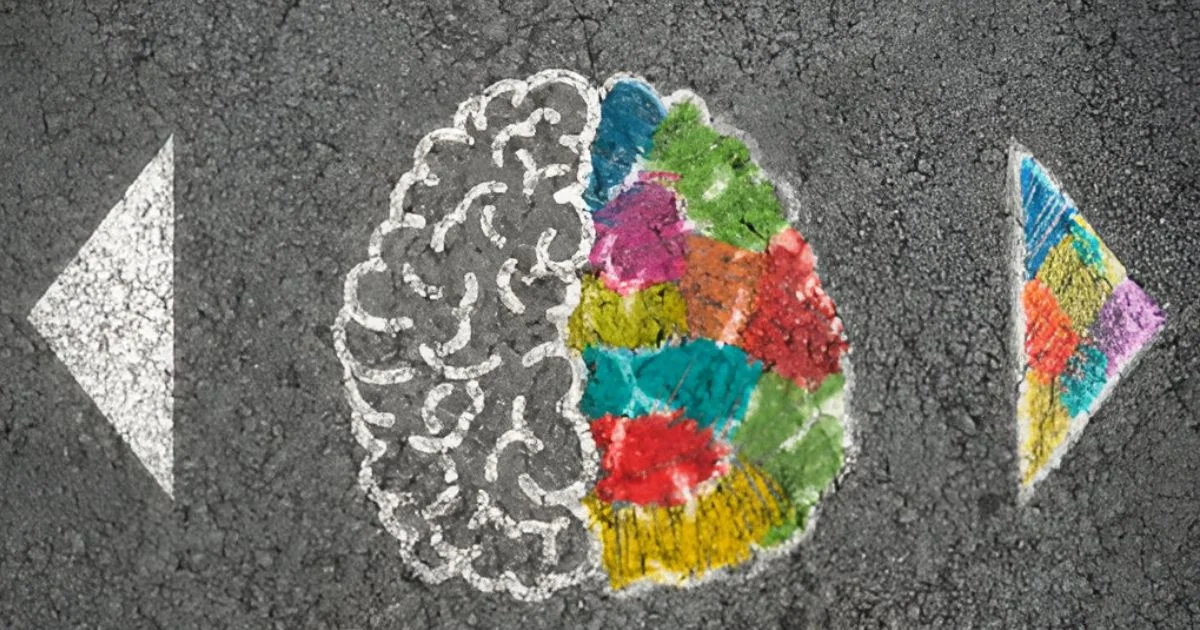Perceiving together: How the brain’s hemispheres share the visual world
Our perception of space feels fluid and seamless. We instantly detect what happens on our left and right, trace visual trajectories, and identify objects in complex environments. Beneath this apparent unity, however, lies a highly structured bilateral brain organization: the left hemisphere processes input from the right visual field, and the right hemisphere, from the left field. This division raises a fundamental question in neuroscience: how do both sides of the brain coordinate to produce a unified experience of the world?
For decades, discussions around hemispheric specialization were clouded by clichés: logical vs. creative, rational vs. intuitive. But the reality is far more functional. The hemispheres do not oppose each other, they cooperate by dividing tasks. In visual and especially spatial perception, this organization enables parallel processing of the visual field, enhancing the brain’s speed and capacity for analysis and reaction.
Recent studies show that this division is not merely anatomical, it reflects an active strategy of cognitive optimization. Each hemisphere can, under certain conditions, process information relatively independently, effectively doubling perceptual capacity. Still, this autonomy is flexible. Depending on the task, tight coordination between hemispheres may become essential. It is this constant adjustment between specialization and cooperation that gives our spatial perception its remarkable fluidity.
From split processing to unified perception
To what extent can the brain’s hemispheres function independently during visual perception? And under what conditions do they need to cooperate? These are the questions explored by Scott Brincat and Earl K. Miller in a 2025 Neuropsychologia study. By observing neural activity in the posterior parietal cortex of macaques exposed to visual stimuli presented simultaneously on both sides of their visual field, the researchers aimed to understand how each hemisphere processes its share of information.
Their findings reveal a precise and efficient organization. Each hemisphere encodes information from its visual hemifield with relative independence. Rather than fragmenting perception, this parallel processing strategy allows for an optimal distribution of attentional resources. The brain divides the visual field to maximize coverage, without loss of accuracy or cognitive overload. Two distinct processes can thus run in parallel, each focusing on one portion of space, while remaining capable of merging when needed.
However, autonomy has its limits. When tasks become complex, ambiguous, or require an integrated response, like tracking an object crossing the midline, rapid communication between hemispheres becomes essential. The system shifts into a cooperative mode, demonstrating exceptional flexibility. The transition from parallel to integrated processing is not reflexive; it is a real-time adaptive strategy shaped by cognitive demands.
While bilateral brain function has been observed in humans through neuroimaging, earlier studies were limited to overall performance or global brain activation. They left unanswered whether perceptual division is due to true functional autonomy or constant, centralized coordination.
This new study provides a clearer answer. Using high-resolution neural recordings and a tightly controlled visual protocol, the researchers demonstrate that both hemispheres can encode visual information independently, without mutual interference, until cooperation becomes necessary. This discovery goes beyond confirming a known phenomenon; it explains the functional logic behind it and the precise conditions that trigger interhemispheric coordination. It invites us to rethink perception not as a centralized construction, but as a distributed, modular, and adaptive process.
🔗 Read also: The brain’s compass: When the brain misreads the map
Two hemispheres, one task: the power of parallel vision
These findings challenge traditional views of brain lateralization. Far from being a rigid division of functions, lateralization emerges as a perceptual optimization strategy. The brain does not confine abilities to isolated zones, it distributes them flexibly, according to the geometry of the environment. In visual processing, this provides a double advantage: faster, more targeted information analysis, and enhanced resilience in dynamic or complex situations.
The hemispheres’ spatial specialization should not be seen as strict isolation. It is a flexible, context-sensitive division of labor. Each hemisphere naturally favors the processing of information from the opposite side of the visual field. This setup allows for swift, focused analysis of events occurring on either side. But this doesn’t mean they work in silos. In simple tasks, like spotting an object in a corner, each hemisphere can function almost independently. When the task becomes more complex, such as tracking a moving object or comparing two elements across the midline, communication between hemispheres is triggered.
They then exchange information via specialized connections, such as the corpus callosum, to unify perception. This modular design, balancing local autonomy with global cooperation, offers major advantages. It prevents redundant processing (which would be energy-consuming), while ensuring synergy when needed. The brain, therefore, operates not through a central command but via a distributed system, where each hemisphere contributes based on its strengths and the task’s demands.
This context-dependent, distributed processing is one of the brain’s most remarkable features. It can function as two parallel systems when that’s enough, and as a single integrated one when necessary. This functional plasticity gives spatial perception its richness, stability, and responsiveness.
🔗 Discover more: Decision-Making: What If the brain took more than one route?
From stroke recovery to AI: why this matters
This renewed perspective holds practical significance. In stroke rehabilitation or after traumatic brain injury, understanding how hemispheres share visual processing can guide new compensation strategies. Reinforcing processing on the intact side could help restore, at least partially, the patient’s perceptual abilities. In disorders like visual hemineglect, where a patient ignores one side of space, this model provides a valuable framework to interpret disruptions in interhemispheric balance.
Beyond medicine, this knowledge inspires other domains. Brain-computer interfaces, for instance, could harness this dual-channel structure to optimize information flow and enable parallel processing. Similarly, perceptual artificial intelligence systems might benefit from alternating independent processing and synchronized coordination, taking cues from the biological model.
Ultimately, recent research breaks away from the oversimplified left brain/right brain dichotomy. It highlights a far more sophisticated system: two hemispheres capable of independently processing opposite halves of the visual field, while dynamically coordinating based on real-time needs. This setup allows the brain to handle more information, more quickly, and more efficiently. By deepening our understanding of this dynamic, we not only enrich our grasp of human cognition, but also pave the way for smarter therapies, tools, and technologies aligned with the brain’s natural functioning.
Référence
Brincat, S. L., & Miller, E. K. (2025). Cognitive independence and interactions between cerebral hemispheres during working memory. Neuropsychologia, 212, 109153.
Santhouse, A. M., Ffytche, D. H., Howard, R. J., Williams, S. C., Rifkin, L., & Murray, R. M. (2002). Functional imaging of the mechanisms underlying the bilateral field advantage. NeuroImage, 17(2), 680–687.








